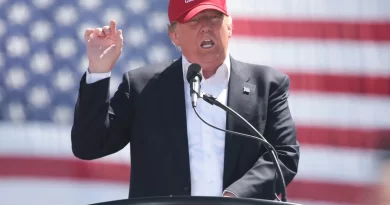There is not and has not been any credible evidence of significant fraud in the 2020 election

We have evaluated this claim over and over since the election, but it persists within the public imagination quite stubbornly. Given that the results of the election have moved past any serious point of contention with the votes of the presidential electors on Monday, it’s worth delineating as robustly as possible why the assertion that the contest was marred by fraud are meritless. It’s worth, in other words, trying to explain why skepticism of the result is often based on erroneous logic and bad information.
At the outset, I’ll note that I fully recognize that this article will be treated with skepticism of its own simply because it originates at The Washington Post. There has been a lengthy effort to paint this publication as untrustworthy that predates President Trump’s time in office, just as there has been an effort to suggest that electoral results are subject to rampant fraud for much longer than the past four years. I just ask that any such skepticism be set aside for the moment, so that the evidence can be considered on its own merits.
Let’s begin by explaining what objectively isn’t credible evidence of fraud.
Affidavits from individuals who were observing vote counting, for example, are not necessarily evidence of actual fraud having occurred. Trump’s reelection campaign recruited a number of people to observe vote-counting in swing states and generated sworn affidavits from those people about what they saw. Only rarely did those affidavits even actually allege fraudulent activity, as multiple reviews of the documents made clear. At no point was actual fraud demonstrated. Often, what’s documented is the complex process of vote-counting as seen by people not familiar with how it works. That holds true for video recordings of vote-counting, too.
Another thing that isn’t evidence of fraud is statistical analysis of vote returns. Evaluating how votes were tallied and where can reveal oddities that point to problematic vote casting, but such analysis itself is useful as a pointer for further investigation and is not proof in itself. This includes analyses which purport to show that various dead people voted. As has been shown, such analyses are often riddled with errors, if not completely unsound.
Most important, the theoretical ability to commit fraud is not itself evidence of fraud. Just because there are dead people on the voter rolls which there certainly are — does not mean that those registrations were used to commit fraud. Just because voters were mailed ballots without requesting them doesn’t mean that rampant fraud occurred.
That’s because successfully committing fraud would be hard. There are a lot of safeguards in place aimed at rooting out fraud, and there’s no indication that those safeguards are routinely evaded. In any election, including this year’s, there are demonstrated examples of efforts to commit fraud. But things like verifying voter identities and running elections at the county level make doing so without detection difficult.
We’ve been careful here to use two qualifiers for this discussion. The first is credible, as it applies to the evidence. There have been a lot of efforts to present evidence showing fraud, generally along the lines of what was discussed above. There has not been evidence presented of any significant fraud, which is the second qualifier. We’re not concerned here about a few dozen illegally cast votes, should such a thing be demonstrated. We’re talking about the existence of enough fraud to call the results of the election into question — meaning tens of thousands of fraudulent votes.
Some will argue that such rampant fraud would be easily committed using tools like electronic voting machines. One brand of voting machines, Dominion, has emerged as a particular target of suspicion, including from Trump.
It’s an appealing concept, the idea that the number of votes for a candidate can simply be cranked up or down and elections thrown as a result. But, again, there’s no evidence that anything such thing happened. This falls into the “theoretical ability” category of claims.
In practice, though, it’s not really possible. Consider Georgia, where Dominion machines are used broadly. There, voters cast ballots on Dominion machines, which tally their votes. The machines also create a paper record of the vote, meaning that Trump voters who punch their choice into the machine also see a document created indicating their choice.
That’s what was recounted and audited in the weeks after the election: the paper records created. While the audit did find that several thousand votes had been erroneously excluded from the tally, it was a function of human error that the audit caught. Otherwise, the paper record matched the electronic tally. No one turned any dials to alter the vote.
Should one so desire, one could conjure up some sweeping allegation of deviousness on the part of elected officials in the state, a broad conspiracy involving scores of people in the Republican-led state that aimed to steal the election from Trump (yet not to hand the two Senate contests to the Democratic candidates). If one wishes to do so, it should go without saying that the burden of proof is on you to show that, say, Gov. Brian Kemp (R) was part of such a conspiracy and not on the rest of the world to debunk it.
What proponents of the idea that widespread fraud occurred generally fail to consider is that any manufactured votes have to come from somewhere. When, for example, people argue that votes were ginned up in major cities in swing states, they tend to miss an obvious follow-up point: Those areas would then almost necessarily have a disproportionate number of votes cast.
Take Michigan. A lawsuit filed by Texas’s attorney general claimed that more than 150,000 votes were fraudulently cast in that state’s Wayne County, home to Detroit, probably by being counted more than once in vote-scanning machines. But that theory is hard to reconcile with two points: that the increase in votes cast in Wayne County represented a smaller percentage of votes cast in 2016 than the statewide average and that the margin in the county shifted to President-elect Joe Biden only 0.8 points, compared to about three points across the state.
If Wayne County invented more than 150,000 votes, it would have been the only county in the state to see fewer votes cast in 2016 than in 2020. That seems unlikely.
Over and over again, the same pattern holds: There are no anomalous vote totals in counties in the swing states. If anything, large counties like Milwaukee in Wisconsin or Philadelphia in Pennsylvania had more Trump-friendly outcomes than other places or smaller increases in vote totals. That’s because Biden’s win was powered not by swings in big cities in swing states as much by growth in suburban areas, as we documented last week.
The graph below compares the change in vote margin from 2016 with the change in the number of votes cast. Higher circles are counties where the vote total increased more; circles at the left are counties where the vote margin shifted more to Biden. What you’ll notice is that, in most states, there’s a fairly uniform increase in turnout and a disparate shift in the vote margin, though one that generally moves to Biden — as you’d expect, given that he won.
If you think that Michigan created enough votes to hand Biden the election — 155,000 or so — you have to figure out where those votes show up in the totals. If it wasn’t in Wayne County, perhaps they were divvied up across the state’s 83 counties somehow. But that then implies a widespread conspiracy of the sort outlined above, and dramatically increases both the burden of proof for those making the allegation and the likelihood that evidence of the conspiracy would have shaken loose.
These claims about fraud also depend on the idea that, in states like Wisconsin, Arizona and Georgia, just enough fraud was committed to give Biden the win. To explain this, proponents of the theory that Biden won through fraud allege that ballots counted late were inflated to just cover the deficit.
In support of that claim, they point to surges in votes tallied during the early morning hours of Nov. 4. But in addition to those surges not being apparent when considering how votes shifted since 2016 (as above), they’re also easily explained. Michigan, Pennsylvania and Wisconsin didn’t start counting mail ballots until Election Day. Those ballots favored Biden because, as polling showed over and over before the election, Democrats were more likely to plan to vote by mail. That meant that, in those states, votes counted later heavily favored Biden.
In Wisconsin, for example, mail-vote totals couldn’t be reported until they were complete. Milwaukee finished counting them after 3 a.m. and reported Biden’s overwhelming victory in the county at that point. It wasn’t suspicious, it was just slow — and a predictable function of how the vote-counting was set up. In the end, Milwaukee County voted about three points more Democratic than it did in 2016 while turnout was up only 4 percent, compared to the state average of more than 12 percent.
Over the course of the past five weeks, there have been enormous numbers of allegations made, none of which — none — has been shown to actually represent any significant fraud. There has been no court case in which a judge was compelled to throw out any presidential votes and no evidence presented publicly which proves that presidential votes should be considered as suspect. There have been repeated promises that such evidence exists and will be presented at the appropriate time as the process of certifying Biden as the election’s winner continues without interruption.
Our political process depends heavily on our sharing an understanding of what has and what hasn’t happened. What happened in the 2020 presidential contest is that 7 million more Americans voted for Biden than Trump, in part because Trump was a deeply polarizing president. What hasn’t been demonstrated to have happened was that substantial fraud occurred, casting a shadow over the outcome.
It is on those who allege that fraud did occur to prove their case, which they have not so far been able to do. It is also on those who make such allegations to disentangle their claims from any benefit they receive from elevating such claims without evidence.
Update: Like clockwork, a new allegation arose shortly after this article was published. It carries all of the hallmarks of the genre: sweeping allegations, a Dominion machine, a claim that fraud could have occurred and not that it did.
Its central claim, offered by an expert who had previously confused Minnesota voting data for data from Michigan, is that Dominion machines were used to “create systemic fraud and influence election results.”
It made this determination after looking at machines in Antrim County, Mich. Trump won the county by 3,800 votes after winning it by 4,000 in 2016. Again, Trump lost Michigan by more than 150,000 votes.
*** This article has been archived for your research. The original version from The Washington Post can be found here ***


